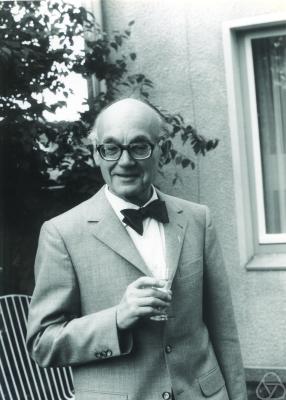
Diophantus of Alexandria was a Greek mathematician, who was the author of a series of books called Arithmetica, many of which deal with solving algebraic equations.

Wacław Franciszek Sierpiński was a Polish mathematician. He was known for contributions to set theory, number theory, theory of functions, and topology. He published over 700 papers and 50 books.

Kollagunta Gopalaiyer Ramanathan was an Indian mathematician known for his work in number theory. His contributions are also to the general development of mathematical research, and teaching in India.

Pál Turán also known as Paul Turán, was a Hungarian mathematician who worked primarily in extremal combinatorics.
In mathematics, a sum-free sequence is an increasing sequence of positive integers,

Yuri Vladimirovich Matiyasevich, is a Russian mathematician and computer scientist. He is best known for his negative solution of Hilbert's tenth problem, which was presented in his doctoral thesis at LOMI.

David Eugene Smith was an American mathematician, educator, and editor.

Arnold Walfisz was a Jewish-Polish mathematician working in analytic number theory.
Sir Alexander Oppenheim, OBE FRSE KT PMN was a British mathematician and university administrator. In Diophantine approximation and the theory of quadratic forms, he proposed the Oppenheim conjecture.

Max Deuring was a German mathematician. He is known for his work in arithmetic geometry, in particular on elliptic curves in characteristic p. He worked also in analytic number theory.

Dorian Morris Goldfeld is an American mathematician working in analytic number theory and automorphic forms at Columbia University.
Leonard Carlitz was an American mathematician. Carlitz supervised 44 doctorates at Duke University and published over 770 papers.

Andrzej Bobola Maria Schinzel was a Polish mathematician studying mainly number theory.
Michael J. T. Guy is a British computer scientist and mathematician. He is known for early work on computer systems, such as the Phoenix system at the University of Cambridge, and for contributions to number theory, computer algebra, and the theory of polyhedra in higher dimensions. He worked closely with John Horton Conway, and is the son of Conway's collaborator Richard K. Guy.

Vitaly Bergelson is a mathematical researcher and professor at Ohio State University in Columbus, Ohio. His research focuses on ergodic theory and combinatorics.
Florian Luca is a Romanian mathematician who specializes in number theory with emphasis on Diophantine equations, linear recurrences and the distribution of values of arithmetic functions. He has made notable contributions to the proof that irrational automatic numbers are transcendental and the proof of a conjecture of Erdős on the intersection of the Euler Totient function and the sum of divisors function.
Ernests Fogels was a Latvian mathematician who specialized in number theory. Fogels discovered new proofs of the Gauss-Dirichlet formula on the number of classes of positively definite quadratic forms and of the de la Vallée-Poussin formula for the asymptotic location of prime numbers in an arithmetic progression.
Walter Wilson Stothers was a British mathematician who proved the Stothers-Mason Theorem in the early 1980s.
Bohuslav Diviš was a Czech mathematician, who worked in the field of number theory.










